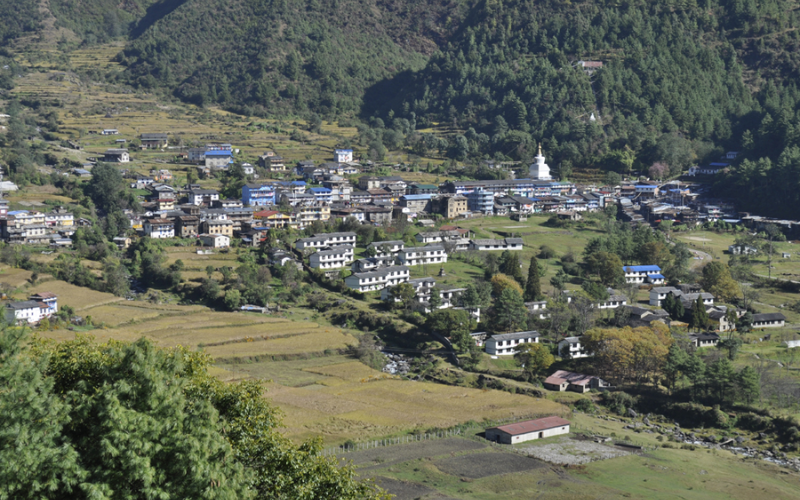Dolakha District, located in Bagmati Province of eastern Nepal, is a land of striking contrasts and enduring traditions. Bordering the Tibet Autonomous Region of China to the north, it is a place where Himalayan landscapes merge with centuries-old legends. Known for its sacred temples, glacial lakes, and the towering Gaurishankar Himal, Dolakha represents both the spiritual and natural essence of Nepal.
Geography and Landscape
The district stretches from fertile river valleys to snow-covered Himalayan summits. Among its most remarkable features is the Rolwaling Valley, often described as a hidden gem. Remote and less frequented by mass tourism, the valley offers pristine alpine scenery and is linked to the folklore of the legendary Yeti.
High in the valley lies Tsho Rolpa Lake, one of Nepal’s largest glacial lakes, situated at about 4,580 metres above sea level. Its turquoise waters are both a natural wonder and a subject of scientific interest, as climate change poses risks of glacial outburst floods.
Cultural and Religious Heritage
Dolakha is home to diverse communities, including Tamang, Sherpa, and Newar peoples, each contributing to the region’s languages, festivals, and rituals.
At the cultural heart of the district stands the Dolakha Bhimsen Temple, located roughly 4 kilometres east of Charikot, the district headquarters. Unlike most shrines, this temple has no roof. It houses a triangular stone idol, worshipped as Bhimsen, the deity of trade, industry, and fortune. Traders and pilgrims from across Nepal come to seek blessings here.

Legends of Dolakha Bhimsen
According to legend, twelve porters discovered the idol while cooking rice on a three-stone stove. When one porter struck the stone, it began to bleed a milk-like substance, revealing its divine power. Today, the idol is believed to embody three deities over the course of a day: Bhimeshwar in the morning, Mahadeva at midday, and Narayana in the evening.
The idol is also famous for its mysterious phenomenon of “sweating”, when droplets appear on its surface. These events are regarded as omens of major upheavals, including natural disasters or political turmoil. In the past, such signs were reported to the royal palace, where rituals were performed to ward off misfortune.
Historical Significance
Dolakha is woven into Nepalese mythology. It is said that Bhima, one of the Pandava brothers from the Mahabharata, spent part of his exile in this region. The area also served as an important stop on trade routes leading into Tibet, reflected in the traditional Newar architecture of Dolakha Bazaar.
Dolakha is more than just a district; it is a living tapestry of myth, faith, and nature. Its landscapes invite exploration, from the tranquil glacial waters of Tsho Rolpa to the towering peak of Gaurishankar. Its spiritual life continues to revolve around the enigmatic idol of Bhimsen, while its people embody a spirit of endurance in the face of adversity. For visitors, Dolakha offers not only adventure in the Himalayas but also a glimpse into Nepal’s cultural and historical soul.
PC: Wikimedia Commons
Also Read